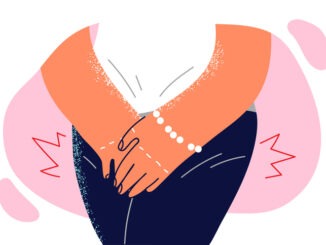
Helen Salisbury argues that this year’s additional roles reimbursement scheme money should be used for community COVID-19 clinics
CREDIT: This is an edited version of an article that originally appeared on The BMJ
The daily count of coronavirus cases is rising and, after a few days’ delay, admissions and deaths are mounting too. The cautious relaxing of restrictions, and the resumption of routine and preventive medicine, need to be rethought. Unfortunately, the systems that worked in April may not be the right ones as we now head towards winter, with its usual onslaught of viral respiratory infections.
I’m particularly concerned about how GPs will look after patients who may have contracted coronavirus, while continuing to care for our elderly and vulnerable population. Each area has different solutions, but during the first wave we had an effective system of ‘hot hubs’, where patients who had symptoms suggestive of COVID could be examined away from our surgery. We’ve been told that, this time, the hot hub service will operate with a more limited capacity and won’t be able to see anyone under 18. Our clinical commissioning group is up front about the fact that this provision will be insufficient to meet needs; the reason given is that there’s just not enough funding.
Somewhere there’s a pot of unspent money earmarked for primary care and labelled ‘additional roles reimbursement scheme’ (ARRS). 2020 was the year when primary care networks were meant to diversify their workforces by employing pharmacists, physiotherapists, social prescribers and an increasing list of people who might share some of the work of general practice. Whether this is really what we need is an argument for elsewhere but, in the real world, such people are not easy to recruit and, even when found, they require training to adapt their roles to general practice. So, whatever the potential gains from these extra staff, it takes a significant investment of time and energy before those benefits are realised.
We’re already committed to training junior doctors and medical students – and this is not the time to be taking on additional learners who need to observe surgeries and be supervised. The need for social distancing means we don’t have the physical space, and we certainly lack the headspace for this project right now.
What we do have is an urgent need for funding that will enable us to set up dedicated coronavirus clinics or adapt surgeries so that they can safely separate infectious and vulnerable patients. Somewhere a budget is set aside for additional roles that are not currently required. The solution appears quite simple; use this year’s ARRS money for community COVID-19 clinics.
We know that avoidable deaths occurred during the first wave, as people delayed seeking the medical help they needed because they feared catching coronavirus in a medical setting. If we don’t effectively separate out patients with viral symptoms, those fears may become a reality as our surgeries turn into danger zones rather than places of safety.


Be the first to comment